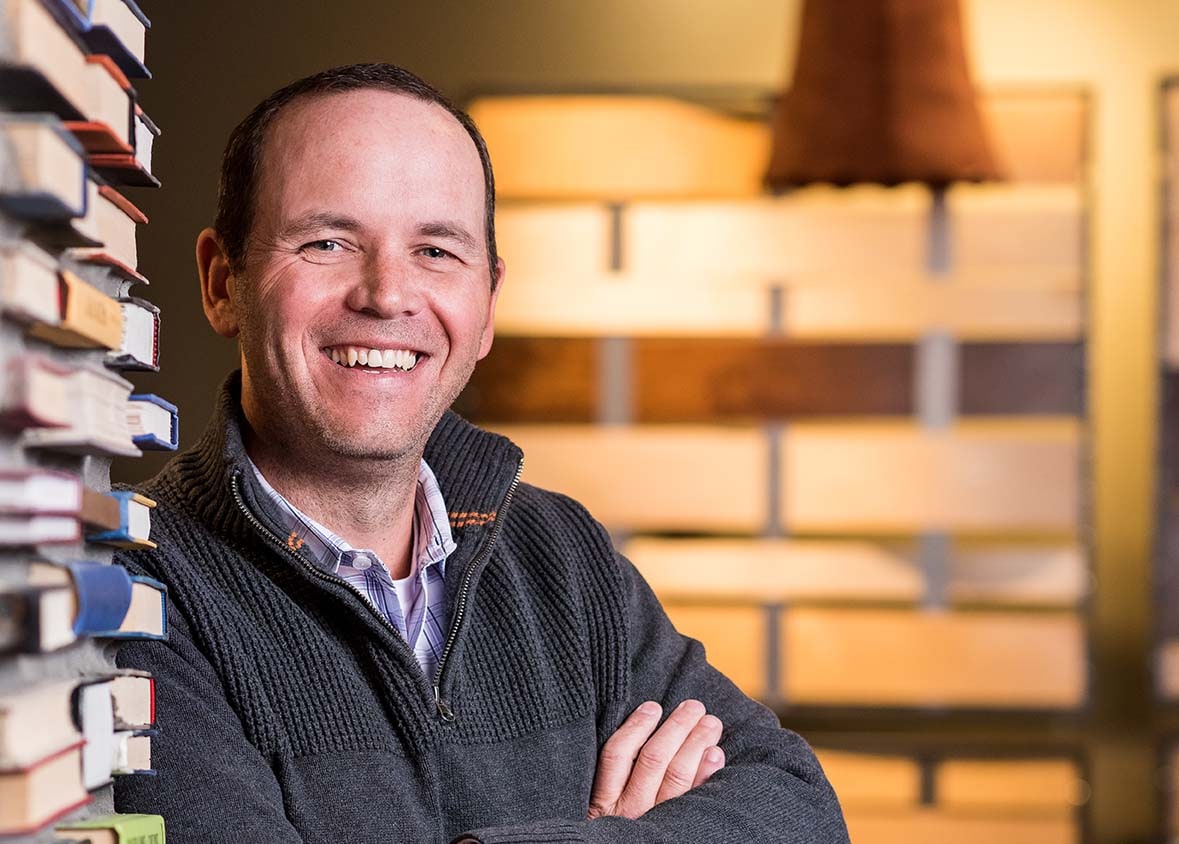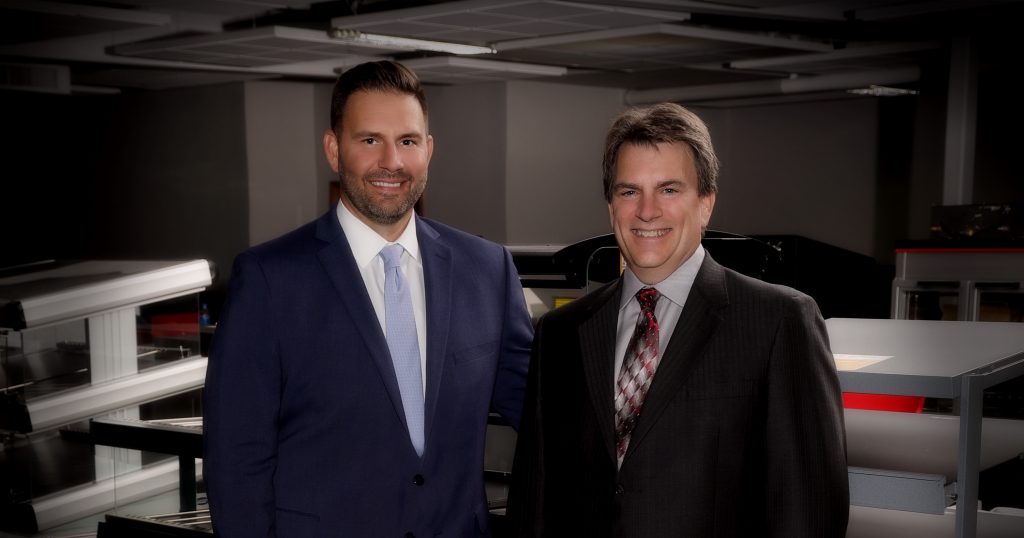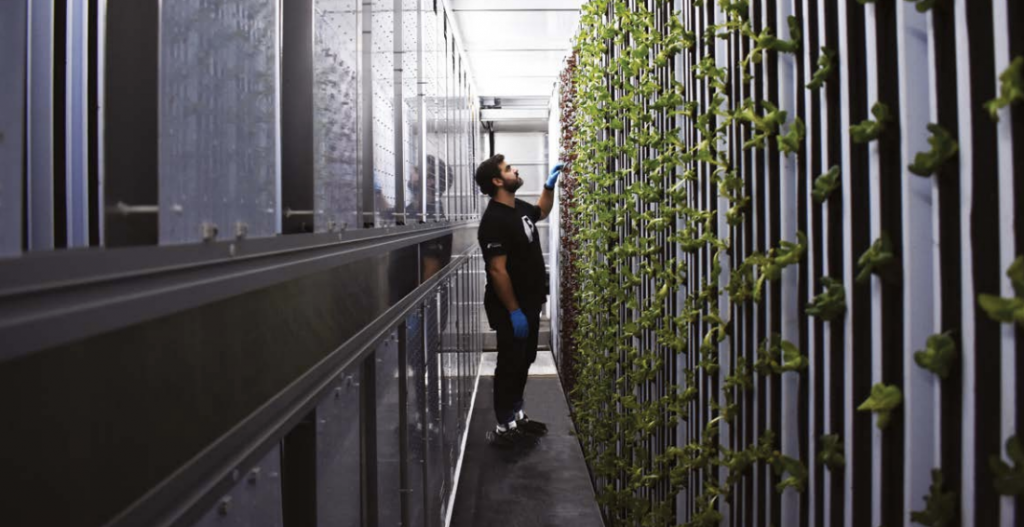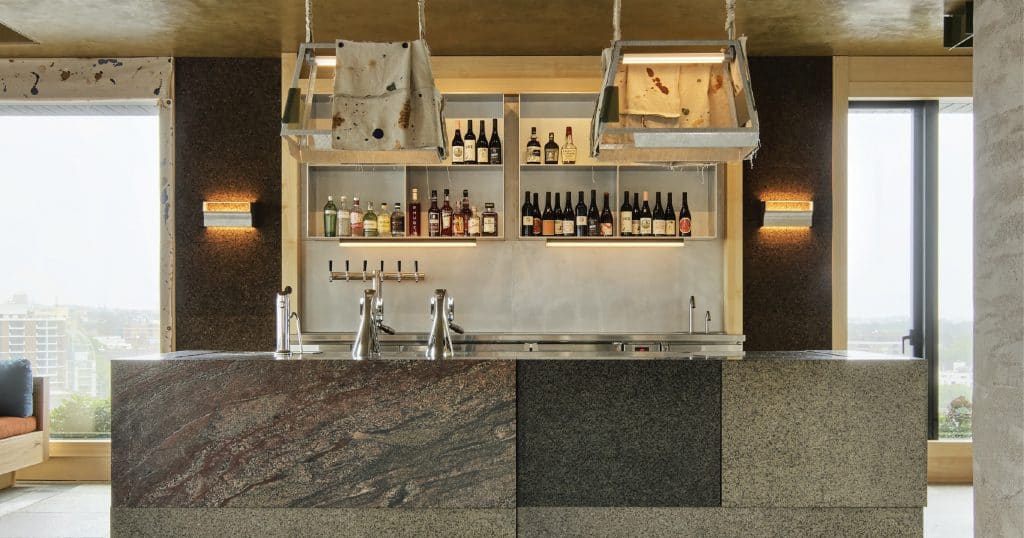
Today, Leap Hospitality, located just outside of Kansas City, Missouri, US, focuses more on brand development and front-of-the-house décor furnishing, a niche area for the company and industry. More recently, Leap has also launched two sub-businesses, a talent recruiting firm for the hospitality industry as well as an hospitality freight management arm to help chains, large resorts, casino and other clients cut down on pricey shipping costs as they expand. On the furnishings side, clients include Pizza Rev, First Watch, Big Onion Tavern Group, The Cordish Companies (a large-scale entertainment district development company), and others.
Phelan earned his bachelor’s in business from the University of Missouri-Columbia and his MBA from Keller Graduate School of Management. Over the course of his tenure in business, Phelan has raised more than $50 million in private equity for various hospitality projects, and he has supplied and manufactured more than $25 million in hospitality furniture, successfully opening 15-plus new food and beverage concepts in just one year in business alone.
How and why did you decide to buy out what was once Fast Food Equipment Systems?
I came from outside the industry. I worked at Sprint for five years in a financial analyst capacity while going back and getting my MBA. I figured out then that I don’t enjoy working for large companies, so I ended up working for a small manufacturer that made wheel chair lifts and home elevators and helped grow that company as head of marketing and business development. Still, I was looking to eventually grow my own business. I started analyzing businesses through business brokers knowing I didn’t want to start from scratch, but wanting a business model that would make sense for my family and I. When I found Fast Food Equipment Systems, I analyzed it and saw that it had grown business over the last decade. Applebee’s was its biggest client, but I was confident I could grow past that. Unfortunately, I bought the company right as the economy took a downturn, and the restaurant industry was really struggling. That pushed me to reorganize and take a different path.
Seems that path was making a switch from heavy equipment to furnishings. How did that come about?
We represented quite a few manufacturers for back of the house equipment, but after the recession, we were becoming pretty limited in terms of what we were allowed to sell in certain territories, mostly due to changes happening with buying groups and because we were smaller. There was less of a barrier to entry in furnishings at the time so that is why I settled on that niche that I found. The need for front-of-the-house support has definitely grown over the years, especially as many chains continue to grow so fast. We have become almost like a nice subcontractor for our chain restaurant clients. The margins are higher in furnishing sales and it’s a very stable business. We are still very relationship-based. We are not perfect, but we are in it together with our clients to achieve the best outcome possible. We feel like true partners and an extension of their restaurant development that they don’t have to think about it. We walk them through the entire process of front-of-the-house build-out, working closely with designers, installers and general contractors and then staying on for follow-ups after the project is completed. Our hands-on service and dedication sets us apart and is probably the reason our customers stick with us. When we first started in this niche 10 years ago, we probably did a half million in furnishing sales. Last year, we made 6 million dollars in sales with just two sales reps.
What type of furnishings do you sell?
We tailor our décor packages depending on our customers’ needs, but we sell anything from basic tables, chairs and booths to custom-built furniture and anything made out of wood as well as metal table bases and more that we manufacturer ourselves out of Kansas City. We import bar stools because they are costly to manufacture here. We also supply lighting, window dressing and anything else you might see in the front-of-the-house.
I imagine lighting is becoming more important than perhaps it’s ever been in the restaurant and foodservice industry. How are sales in that category?
Lighting is certainly becoming a highlight in overall design because there are so many better products on the market now, and because restaurateurs and designers realize the importance of using lighting to really make an impact on the overall feel of the space. In the past, our clients might have allowed the general contractor or electricians to purchase the lighting, but the markups are no longer advantageous to them. We can get the same supplies for a fraction of the cost, and then make sure they are installed correctly.
I’m sure your schedule and duties change quite frequently, but generally what does a day-to-day look like for you?
I bounce around to our different divisions to make sure we are meeting our goals and objectives and helping out our clients in the right manner. For most part, I spend time on business development, trying to find the next client and network with people I know, especially among growing chain restaurants. I also spend a lot of time on the furnishings side going through floor plans, budgets, any value engineering processes, and coordinating with general contractors. We’re generally the last one still around on a new restaurant or bar opening, and follow-up is very important to us. Coordination of the installation of furniture on-site is also very time-sensitive. At any time we might have 20 to 30 restaurants we are working on, from the one-off restaurant to a $2 million entertainment district, or a fast-growing regional or national chain.
So tell us about the hospitality talent search firm you started?
I wanted to add recruiting as a service but didn’t have the infrastructure/system to manage. I searched recruiting franchises that would give us a better foundation and leg up to launch. Global Recruiters Network was by far the best out there that would blend well with our culture and give us the system needed to manage the search process. GRN is a large, privately-owned search firm with 200-plus offices and staffed by over 600 search consultants. It’s also a franchise, and I purchased a location — GRN of Kansas City. Leap Recruit cam e about through this; by leveraging the resources of GRN, we are able to source the best and brightest talent in the hospitality industry. I suppose you could call me a serial entrepreneur. I like to go after something when I see a void, and GRN had a business model very similar to ours. Growing Leap Recruit has been essential to our overall business strategy because now, with two to three sources of income in addition to our furnishing sales business, we have that balance that has really stabilized us over the past few years.
Right, and now you have the hospitality freight management arm. How did that come about?
We work on many large-scale hospitality projects, including large hotels, resorts and casinos in which cases procurement still outsources freight management. This can be incredibly costly. By happenstance, I was in touch with someone from a freight management company looking for a job. We figured we could cut in the middle by helping reduce the freight cost saving to save even more money for our customers. Still, this part of our business is still in its infancy as we just launched it in 2018, so we are working on building it up. We will apply a similar business model to our freight management work as our furnishing sales—by essentially managing the entire job as a subcontractor for our clients.
What is your vision for Leap Hospitality as a whole?
We have our business models very set now, so we will just work on continuing to grow. To be frank, it’s taken a while to figure out the correct model for us and put all the pieces in place; it probably has taken us 10 years. But now, we have a strong understanding of our various niches, so we’re just working on expanding those businesses by driving revenue. We will continue what we’re doing in the most efficient manner possible, and we’re looking at how to get out there more, attending more trade shows, conferences and symposiums, and networking with others in our industry to get the word out about our brand. On the recruiting side, we are currently focused on a lot of contingent mid-level hires but would like to work on more retained, c-level searches. We also recently hired another business development manager who is focused on the casino and hotel clients, which are growing rapidly. There has been a tremendous amount of restaurant and remodel work in that segment as of late.
Sounds like you’re very busy, but outside of work, what do you enjoy doing?
I remain an avid golfer and try to get out to the course whenever I can. I also enjoy spending time with my family –I have two teenage daughters and they are golfers as well and musicians and one loves to perform in plays. So, I enjoy what they enjoy and enjoy being an active Dad!
Amelia Levin
Photo: Dan Videtich




